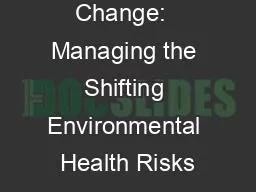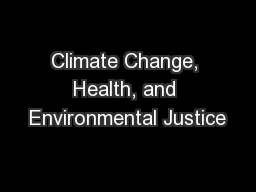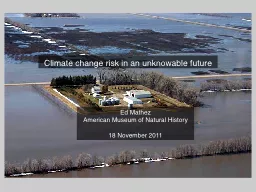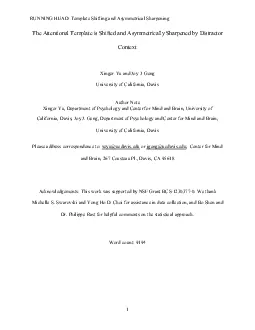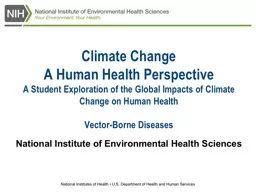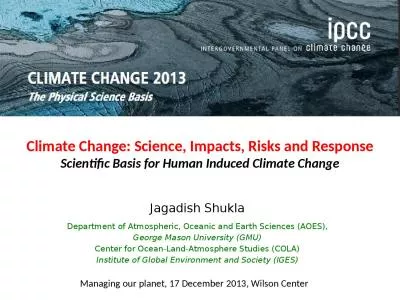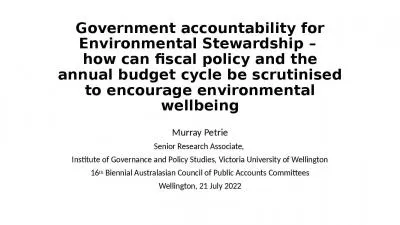PPT-Climate Change: Managing the Shifting Environmental Health Risks
Author : nephewhers | Published Date : 2020-08-27
Changing hazards changing risks and the need for robust risk management Jeremy Hess MD MPH Overview Climate change Whats happening and why What health impacts well
Presentation Embed Code
Download Presentation
Download Presentation The PPT/PDF document "Climate Change: Managing the Shifting E..." is the property of its rightful owner. Permission is granted to download and print the materials on this website for personal, non-commercial use only, and to display it on your personal computer provided you do not modify the materials and that you retain all copyright notices contained in the materials. By downloading content from our website, you accept the terms of this agreement.
Climate Change: Managing the Shifting Environmental Health Risks: Transcript
Download Rules Of Document
"Climate Change: Managing the Shifting Environmental Health Risks"The content belongs to its owner. You may download and print it for personal use, without modification, and keep all copyright notices. By downloading, you agree to these terms.
Related Documents

